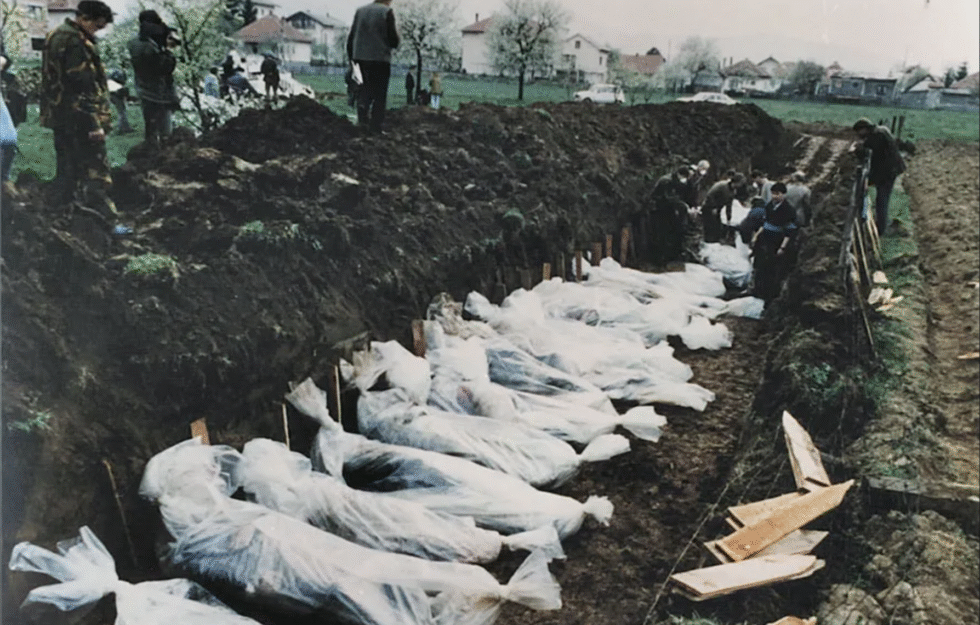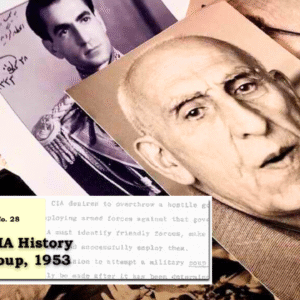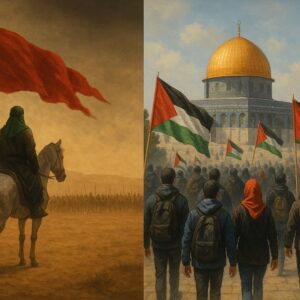Srebrenica Massacre to Gaza: How the World Forgot Its Promise

July 11, 1995. Thirty years ago, forces from Republika Srpska—the separatist, Serb-majority entity—finalized their capture of the city of Srebrenica after three years of brutal fighting.
Almost immediately afterward, militants from the Bosnian Serb Army began a systematic massacre. Over 8,000 were killed, and more than 30,000 were abused and displaced in what became known as the Srebrenica Massacre.
Balkan Bloodshed – Breakup of Yugoslavia
After the death of Yugoslav leader Marshal Josip Broz Tito, Yugoslavia entered the next decade facing economic instability.
This, combined with the rise of ethno-nationalist parties and sentiments, as well as the government’s inability to address growing extremism, led to the collapse of Yugoslavia into several independent countries: today’s Slovenia, Bosnia and Herzegovina, Croatia, Serbia, Montenegro, North Macedonia, and the partially recognized entity of Kosovo.
This collapse was far from peaceful—particularly in Bosnia. Bosnia and Herzegovina is composed of three major ethnic and religious groups: Bosniaks (Muslim), Serbs (Orthodox Christian), and Croats (Catholic). Internally, the country is divided into the Federation of Bosnia and Herzegovina (mainly Bosniak and Croat) and Republika Srpska (Serb-majority).
While Bosniak Muslims make up the largest single group in the country (approximately 50%), Serbs and Croats make up roughly 30% and 15%, respectively. Bosnia itself was often referred to as a smaller version of Yugoslavia due to its diversity.
Unrest in Bosnia spiked on the day of the independence referendum, March 1, 1992. When the region officially declared independence two days later, fighting immediately broke out between ethnic Serbs, Bosniaks, and Croats.
UN Failure
Srebrenica today is a town located in eastern Bosnia, near the Serbian border. It sits within what is now Bosnia’s semi-autonomous, Serb-majority region of Republika Srpska. Though the town has a slight Bosniak majority today, its population was severely reduced by the Bosnian War.
Despite the United Nations declaring Srebrenica a “safe zone” in 1993 and demanding that all warring factions demilitarize and withdraw, in practice, neither side fully complied. Intelligence later emerged that the Bosnian Army had been using the town and surrounding area to store heavy weaponry and transport munitions. Upon learning this, Serbian forces refused to withdraw.
Soldiers from the U.N. peacekeeping force in Srebrenica testified that after Serbian ultranationalist forces seized the town, they witnessed men being dragged off to a building referred to as the “White House,” only to be executed and buried in mass graves.
In several disturbing testimonies heard at The Hague, including one from Zumra Šehomerović, it was described how U.N. “Dutchbat” forces simply stood by as women and children became victims of rape, and how some women witnessed their children’s throats being slit before their eyes.
The Dutch UN peacekeeping force ultimately failed to prevent the massacre.
Western Hands Behind the Curtain
Though often portrayed as impartial brokers of peace, Western powers—especially the United States—were deeply involved in shaping Bosnia’s fractured post-Yugoslav reality.
Behind the façade of diplomacy, Washington used institutions like the National Endowment for Democracy (NED) to funnel support into Bosnia’s political landscape. While branded as democracy promotion, much of this aid ultimately strengthened ethnonationalist actors rather than multiethnic unity.
In Bosnia, the NED and affiliated U.S. entities supported figures like Alija Izetbegović, whose Party of Democratic Action (SDA) emphasized a Bosniak identity that critics argue deepened ethnic divides.
Simultaneously, Croat nationalist factions in Herzegovina—especially under the leadership of Mate Boban and Gojko Šušak—benefited from substantial financial support, estimated at around €300 million per year, or roughly $500,000 daily, from the so-called “Herzegovina lobby,” which linked Bosnian Croats, the Croatian government in Zagreb, and diaspora funding.
While Serb forces bear full responsibility for the Srebrenica genocide, the path to that atrocity was paved, in part, by the West’s willingness to empower exclusivist visions of nationhood. Rather than promoting a civic, pluralist Bosnia, U.S.-aligned policy and funding entrenched the ethno-political divisions that would tear the republic apart.
30 Years Later – “Never Again”
Despite the recurring horrors of genocide, especially over the last century, humanity has yet to learn its lesson.
From the Holocaust and the Hunger Plan to Nanjing and Unit 731, the Rwandan genocide, Srebrenica, and now Gaza—in what is the continuation of Israel’s decades-long dispossession of Palestinians—the so-called international “rules-based order” has repeatedly failed to prevent crimes against humanity.
A notable difference in Gaza is the lack of any significant Western pressure on Israel to stop its actions. Today, American-made bombs are dropped by American-made Israeli warplanes onto Gaza’s civilian population. The British Royal Air Force flies over Gaza, providing surveillance data to Israeli forces. French military aid, totaling in the millions, has also been sent to Israel.
The International Criminal Court (ICC) issued arrest warrants more than a year into the war in Gaza. Yet even after that, many major Western countries “reinterpreted” the warrants in ways that benefited Israel. The French Foreign Ministry suggested Israeli leaders would be immune, since Israel is not a party to the Rome Statute. Similar statements were issued by the leaders of Germany and Poland. The U.S. imposed sanctions on ICC personnel and officials.
Complicity, Not Neutrality
Western powers are not passive observers in these atrocities—they are active participants. In Bosnia, they stood by as civilians were massacred under a blue flag. In Gaza, they fund, arm, and shield the perpetrators.
Just as the Dutchbat forces enabled genocide through inaction, Washington, London, Paris, and Berlin now enable it not only through complicity—but by providing the very tools of genocide.
The invocation of “Never Again” has become not a moral pledge but a diplomatic slogan—one applied only when politically convenient. As Palestinians are starved, bombed, and buried beneath the rubble of their homes, the architects of the so-called rules-based international order are busy rewriting the rules to suit their allies.
The world watched Srebrenica happen, then vowed it would never let it happen again. Thirty years later, we are watching Gaza—and this time, the genocide is livestreamed. Every war crime is recorded. Every dead child is timestamped. Every international convention violated is documented and dismissed.
Remembering Srebrenica Means Acting for Gaza
Commemorating Srebrenica without acknowledging Gaza is historical amnesia. It is an insult to the victims of past genocides to mourn them while facilitating the next. True remembrance means recognizing the mechanisms of genocide as they unfold, calling out not only the trigger-pullers but the financiers, arms dealers, and veto-wielding states who make it possible.
It is not enough to lay wreaths at graves. It is not enough to release statements of regret. It is not enough to wait for history to record what is happening—we must act before it becomes history.
The same powers that once looked away from mass graves in Bosnia are now flying drones over Gaza. The same diplomats who promised “Never Again” are now crafting exceptions for their allies.
Until those systems are dismantled—until the victims are not categorized by race, religion, or geopolitical utility, and until international law applies without exception—the cycle will continue.
And the next Srebrenica is not a possibility. It’s already happening.
If you value our journalism…
TMJ News is committed to remaining an independent, reader-funded news platform. A small donation from our valuable readers like you keeps us running so that we can keep our reporting open to all! We’ve launched a fundraising campaign to raise the $10,000 we need to meet our publishing costs this year, and it’d mean the world to us if you’d make a monthly or one-time donation to help. If you value what we publish and agree that our world needs alternative voices like ours in the media, please give what you can today.










